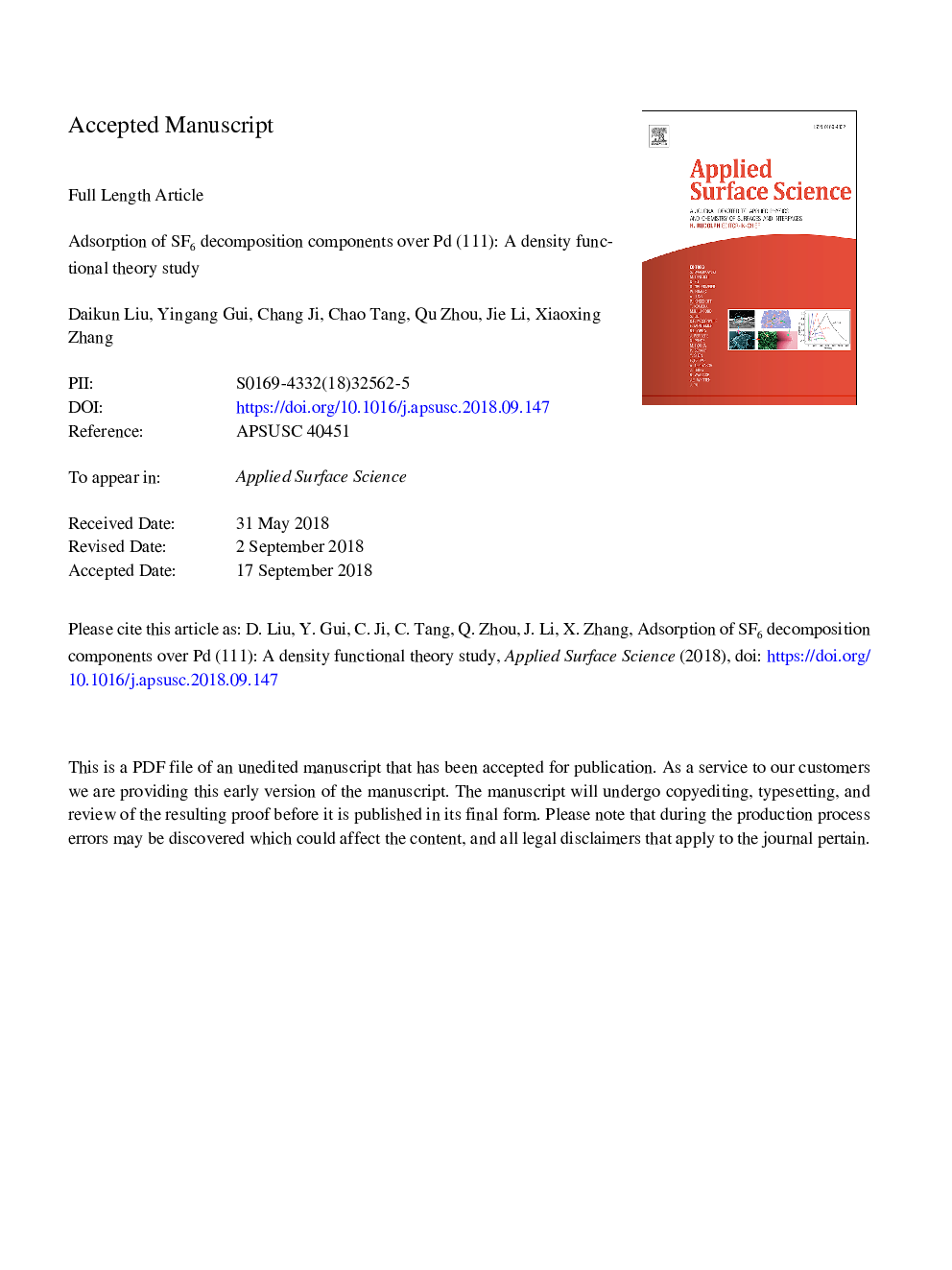| Article ID | Journal | Published Year | Pages | File Type |
|---|---|---|---|---|
| 10155070 | Applied Surface Science | 2019 | 14 Pages |
Abstract
This work studies the adsorption properties of Pd(1â¯1â¯1) surface to various SF6 decomposition components (H2S, SO2, SOF2, and SO2F2). Due to the affluent active d electronic of Pd transition metal, the density functional theory has been used to analyze the adsorption properties of Pd(1â¯1â¯1) surface to H2S, SO2, SOF2, and SO2F2, including the adsorption structures, adsorption energy, and charge transfer. The results show that the adsorption abilities of these gases on the Pd(1â¯1â¯1) surface is in the following order: SO2â¯>â¯H2Sâ¯>â¯SOF2â¯>â¯SO2F2, and all of the adsorption processes are exothermic. Besides, the density of states is further calculated to analyze the interaction mechanism during the adsorption processes. We conclude that SO2 and H2S interact with Pd(1â¯1â¯1) surface by physisorption. SOF2 and SO2F2 tend to adsorb on Pd(1â¯1â¯1) by molecular adsorption, as the energy barriers of dissociation adsorption process is too high for the SOF2 and SO2F2 molecules to cross.
Keywords
Related Topics
Physical Sciences and Engineering
Chemistry
Physical and Theoretical Chemistry
Authors
Daikun Liu, Yingang Gui, Chang Ji, Chao Tang, Qu Zhou, Jie Li, Xiaoxing Zhang,
